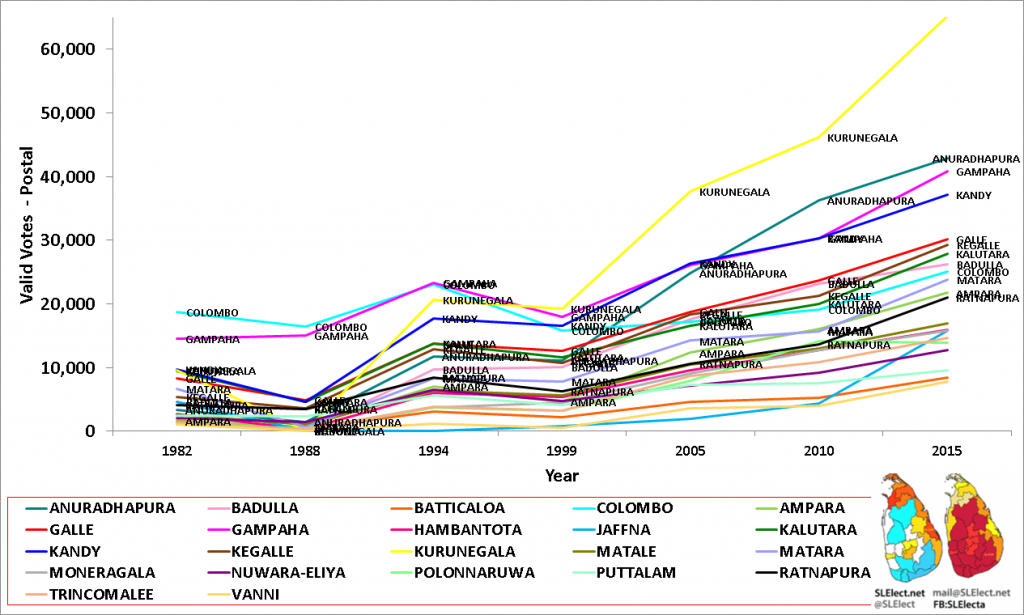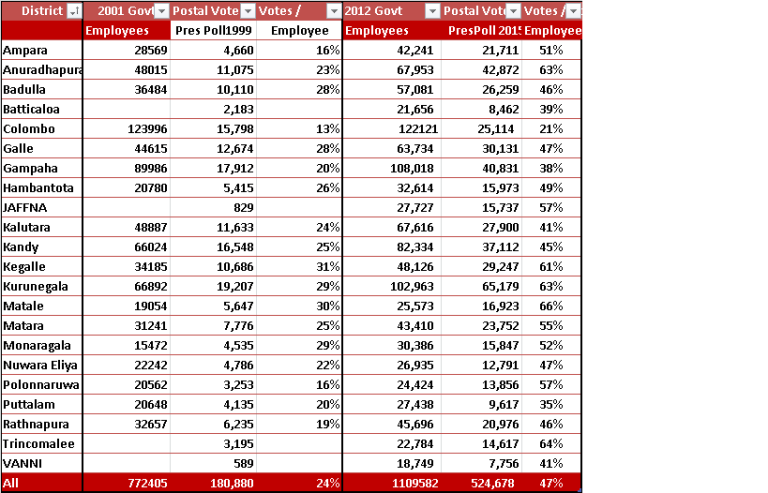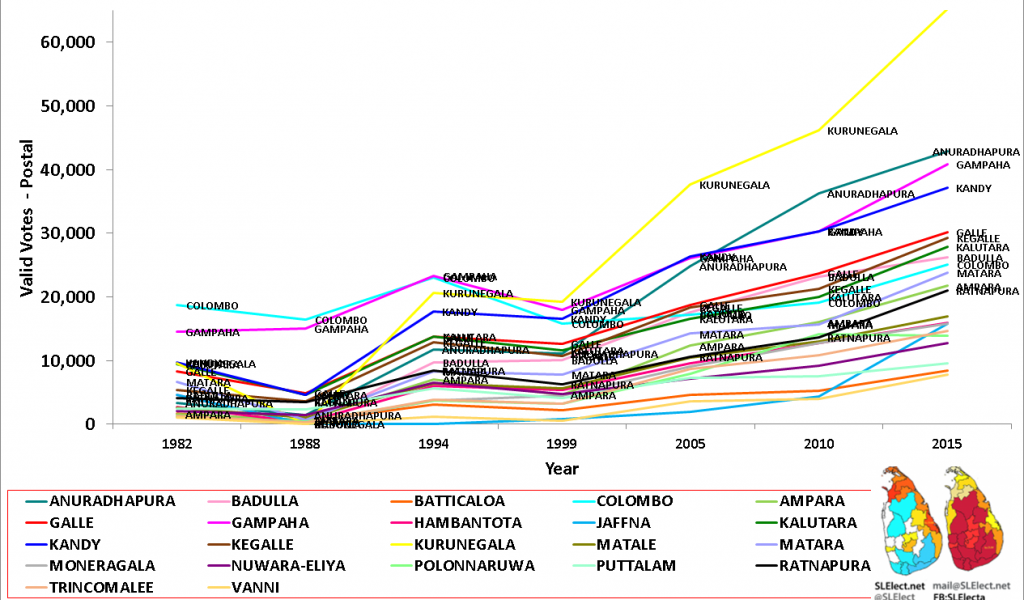- Homepage
- Ghost Voters
- Is Rise in Postal Voting due to Ghosts? Appendices
Is Rise in Postal Voting due to Ghosts? Appendices
by: ZL Mohamed
This post compiles information on
- Background on Postal Voting in Sri Lanka
- Rise of Postal Votes by District (1982-2015)
- Tilt of Postal Votes by Districts in 2015
And is a companion to the article on postal voting.
Postal Voting in Sri Lanka
Postal voting refers to early voting and is offered to government employees (and even a few others) who are engaged in “essential duties” at the time of elections. It seems that the government employee decides which he or she is engaged in essential service. The voter has to apply for postal voting. The voter registration information is “posted” to the employee at their place of work. “Postal voting” is actually done at their workplaces or sometimes in others government offices. The postal voting takes place about one to two week prior to the regular polls. Sometimes, the employees have been offered an opportunity to present themselves at the Kachcheri at a second date if they missed the vote at the office. If the employee does not receive the voter registration card, they revert to polling at the regular polling place.
There have in the past been around 1200 postal voting sites. In some of the polling stations, neither independent monitors nor party representative have attended the postal voting, or followed the ballot boxes being transferred to the counting centers.
Rise in Postal Votes
The data shown in the maps for each districts in the main article may also be graphed. The slightly thicker blue line is for Colombo – the district with the largest number of government employees throughout the period. By 2015, the postal votes from this district have dropped to 9th place.


Table: Data on postal votes in 1999 and 2015 from the Department of Elections. Data on Government Employees by District in 2001 and 2012. Data for Trincomalee, Batticaloa, Jaffna, Vanni were not available from the Department of Census. The ratio of postal votes to government employees is shown as a percentage.
2015 Presidential Polls: Voting Patterns by District

If one looks at the postal voting patterns, there is a split between the votes for the incumbent and the opposition which is similar in general to that of the general population. That is to say that there could not have been a mass-scale dump of fraudulent ballots just for one candidate. But there could have been voter fraud of by a smaller number. This limit may be exceeded in Kurunegala, Anurhadhapura, and Gampaha.
The voter turnout was at an upper limit – in the range of 94-97%. There was the skew towards the incumbent in districts which favoured the incumbent. Such a pattern of higher turnout for regions that favour the incumbent is a signature of voter fraud. But the range in postal voter turnout is lower unlike in the case of the general population. Thus while there is suspicious patterns in the voting here too but one can rule out across the board fraud.

